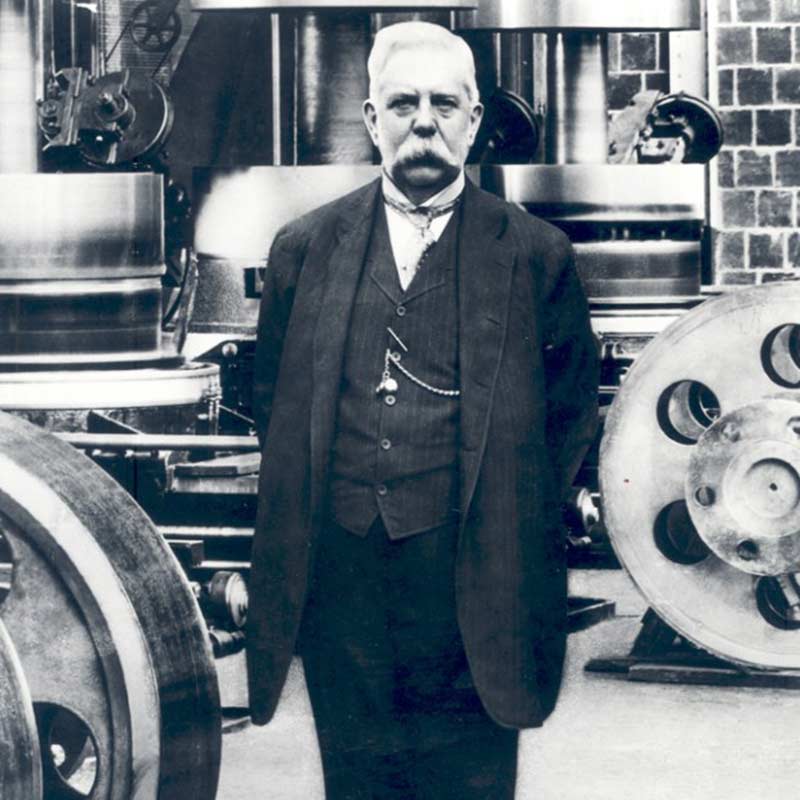George Westinghouse
Notable Westinghouse inventions
Before George Westinghouse became a recognized name in the development of hydroelectricity, he pioneered a number of inventions that are still in use today. He created over 300 patents in his lifetime and the company that bears his name licensed over 3,000.
In his early 20s, Westinghouse came up with his remarkable railway air brake invention. In the late 1860s, he created a type of early steam engine that proved to be revolutionary in the development of farm machinery and the continuing evolution of steam powered technology.
Westinghouse was also the mind behind improved railways signals and track switching devices developed in the 1870s. By the 1880s, he shifted his attention to bringing electricity to North Americans.
Westinghouse in Niagara
Although not often well known, George Westinghouse was greatly involved in the development of the hydroelectric power plants in the Niagara Falls border region. Even while the infamous Chicago World’s Fair was going on, Westinghouse was simultaneously working on finding ways to harness the power of the falls to produce electricity.
Prominent British physicist Lord Kelvin had been converted to the idea of alternating current once he saw it in use and learned more about its technology at the World’s Fair. From 1890 to 1893, the International Niagara Commission, headed by Lord Kelvin, met sporadically to find an engineering firm that could develop an electrical generation and transmission system that could be used by the Niagara Falls Power Company in their first hydroelectric generating plant—the Edward Dean Adams Plant in Niagara Falls, New York.
In October 1893, Westinghouse was awarded the contract to build three generators for the Adams plant based on the alternating current power. This hydroelectric power station was the first of its kind in the Niagara Falls area and began operation in August 1895. It would be the model for all others that rapidly began to follow in its footsteps over the next two decades, including the Canada Niagara Power Station.
This ultimate acceptance of the AC generation and transmission system helped to cement Westinghouse’s name and place in Niagara’s history of electrical development.



